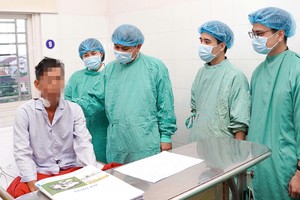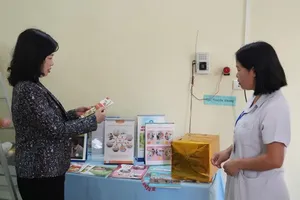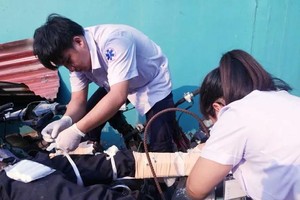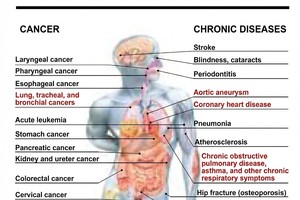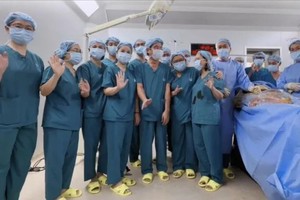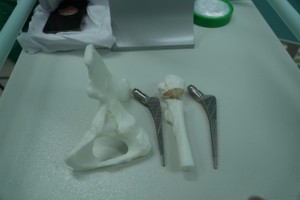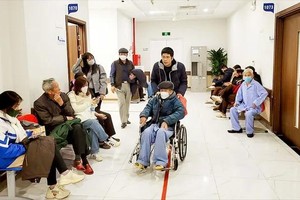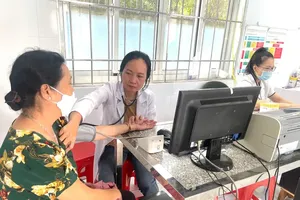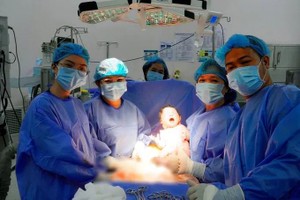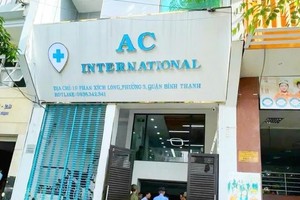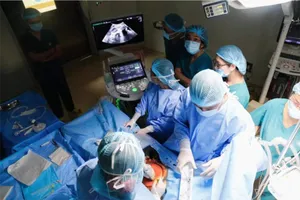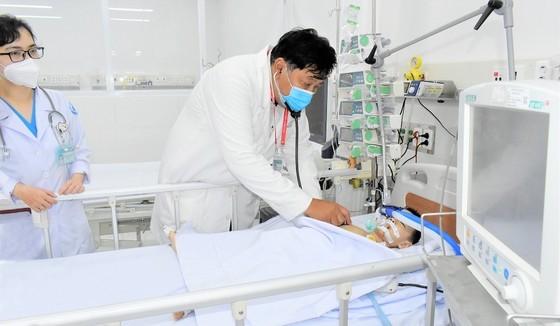 |
Medical experts warn of unprecedented overlapping epidemic |
Several infectious diseases such as hand, foot and mouth disease (HFMD) and dengue fever are more common during the rainy season because waterlogged and damp places provide suitable breeding environments for mosquitoes.
The rainy season started in the South region triggering many infectious diseases with severe cases. Some of critical patients were put on ventilators.
Many critical hand, foot and mouth cases
According to the Ministry of Health, from the beginning of the year until now, the country has recorded 8,995 cases of HFMD and boys aged from 1-10 accounted for 60 percent. Compared to the average of the last 5 years, the number of cases has not shown signs of sudden increase but tends to increase in recent weeks and four children in Dak Lak, Kien Giang and Long An provinces. and Ho Chi Minh City succumbed to the disease.
Alarmingly, by the end of week 23, Ho Chi Minh City recorded 2,407 cases of HFMD. Last week alone recorded 423 new cases, an increase of nearly 150 percent compared to the previous week, including 14 critical cases; one of them had to be put on a ventilator.
Recorded in the past 2 days at a number of children's hospitals in Ho Chi Minh City, many children were hospitalized after they experienced fever, mouth sores, and skin rash for days.
Doctor Nguyen Minh Tien, Deputy Director of the Children's Hospital of Ho Chi Minh City, said that on average, the infirmary receives approximately 50-100 children with HFMD each day. Most of the inpatients were transferred from hospitals in the Mekong Delta. Currently, the Ho Chi Minh City Children's Hospital’s Infection Department is providing treatment for 32 pediatric inpatients, including 2 cases requiring dialysis and 2 cases putting on ventilators.
Similarly, the Department of Infection - Neurology have lately provided an examination for 20-30 with HFMD including 5-7 hospitalized cases. Of the 36 inpatient pediatric patients with HFMD at the ward, 11 had to be hospitalized in the critical ward and 4 were transferred to the Resuscitation - Poison Control Department.
Dr. Du Tan Quy, Head of the Department of Infection - Neurology, Children's Hospital 1, said that all four of these children had to be on ventilators, one on dialysis. Worse, the hospital reported one HFMD-related death.
Elsewhere in the city, the Children's Hospital 2 is also treating nearly 30 children with HFMD, including 9 severe cases.
According to Dr. Nguyen Dinh Qui, Acting Head of the Infection Department, in May, the number of HFMD inpatients was only 4-5 cases a day, but it has increased by 25-27 cases a day within two past weeks. Worse, the number of severe cases accounted for 40 percent while it was about 25 percent in the same period last year.
Dr. Nguyen Dinh Qui warned that HFMD is a disease that occurs all year round, but with the reappearance of the Enterovirus strain (EV71) – a highly virulent virus strain that spreads quickly, causing many dangerous complications in children; therefore, more critical cases were seen this year and they are at risk of death without timely detection and treatment.
Killing mosquitoes is needed
The Ministry of Health announced that nearly 33,000 cases were reported nationwide including nine deaths. The Southeast region, especially Dong Nai Province and Ho Chi Minh City have become hotspots for dengue as they are experiencing a high number of cases.
The Department of Health of Ho Chi Minh City said that in the face of the constantly increasing number of HFMD cases in recent days in the southern metropolis and the southern region, the department has developed a plan to ensure the collection and treatment of HFMD with three response scenarios.
Specifically, in the first 4 months of the year, Dong Nai Province recorded nearly 1,000 cases, now it has increased to over 1,600 cases with 3 deaths. Ho Chi Minh City alone has 7,918 dengue cases without death. Through the monitoring of dengue prevention and control activities in 25 wards, communes and towns in the city, 47 points with larvae were detected out of a total of 85 monitored points.
In the face of complicated developments of the dengue epidemic, the People's Committee of Ho Chi Minh City issued a document on implementing the Plan 2095/KH-UBND to eliminate the breeding ground of mosquitoes that transmit dengue with a focus on emptying and scrubbing, turning over, covering or throwing out any items that hold water like tires, buckets, planters, toys, pools, birdbaths, flowerpot saucers, or trash containers where mosquitoes lay eggs into. Residents are encouraged to accompany the government to remove water from water containers in their houses.
